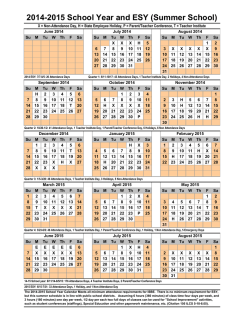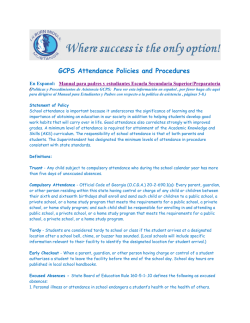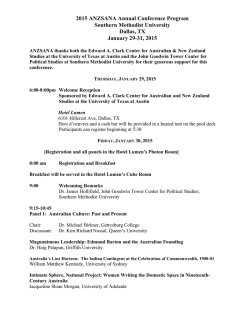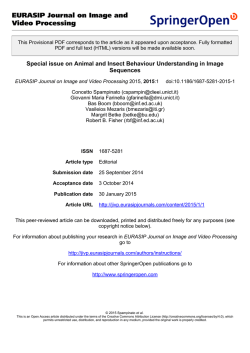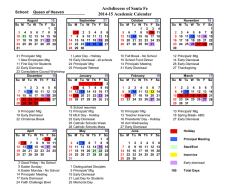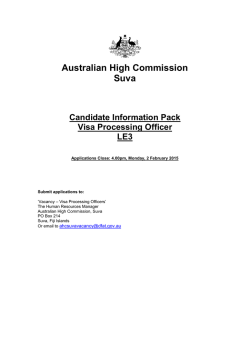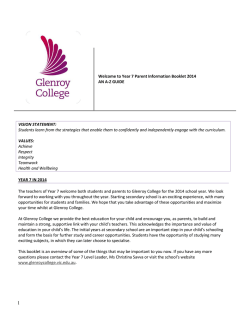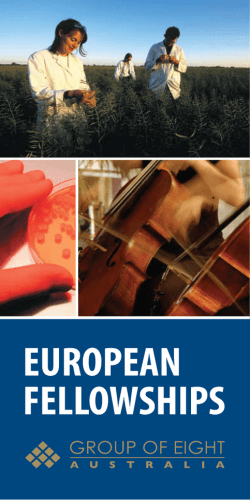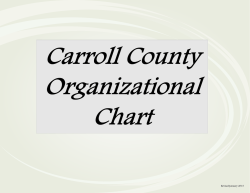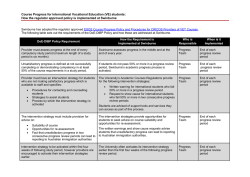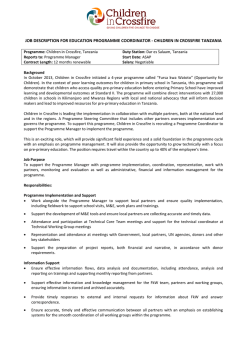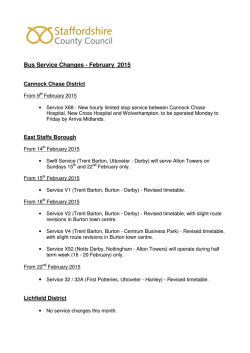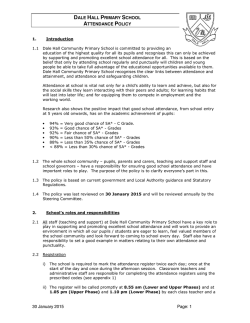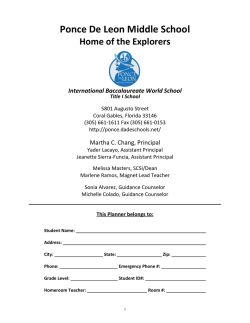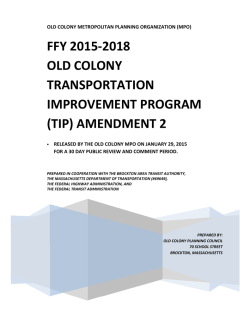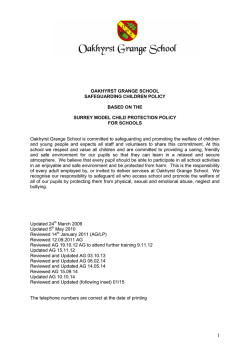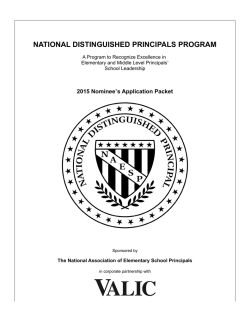
Focus 2015 - The Department of Education
Directions for schools An initiative of the Director General’s Classroom First Strategy FROM THE DIRECTOR GENERAL With many of the strategic directions we have been working on in the past few years now coming to fruition, 2015 is a year of consolidation around our reform agenda. Considerable planning and preparation by schools and at all levels of the organisation have set us up well to deliver on initiatives that will give students an even better education. Initiatives include Year 7 students in secondary schools; 178 new Independent Public Schools; the student-centred funding model; implementation of the Australian Curriculum and National Quality Standard for Early Childhood Education and Care; and revised requirements of the WA Certificate of Education. Focus 2015 sets the initiatives at the forefront of our directions for the year. These directions continue the momentum around school autonomy and local decision-making that are now part of our organisational culture and practice. Focus 2015 also reiterates the importance of core education endeavours including an explicit focus on literacy and numeracy instruction, specific attention on student attendance at school, and continued emphasis on high quality teaching. We must also be mindful of the health and wellbeing of our students, and Focus 2015 includes continued work on children and young people’s resilience, emotional regulation and behaviour. Staff in regions, Statewide Services and central office will continue to support schools in an environment of increased – and increasing – autonomy. I trust schools will use Focus 2015 to refine their plans and lead informed discussion with their communities. Sharyn O’Neill October 2014 www.education.wa.edu.au FOCUS ISSN 2204–1516 SUCCESS FOR ALL STUDENTS Schools •Focus age-appropriate instruction for students on phonemic awareness, phonics, fluency, vocabulary and comprehension. •Plan to increase emphasis on STEM (science, technology, engineering, mathematics) education, particularly in the early years of school and for Aboriginal students. •Teach, assess and report on year-level specific phase one Australian Curriculum content. •Ensure Year 7 students access specialist teaching and facilities as part of their Australian Curriculum learning programs. •Develop intervention and support programs for students, particularly Aboriginal students, anticipated to struggle to meet OLNA standards. •Increase the proportion of students in ATAR pathways and achieving university entrance. •Plan and implement adjustments to teaching programs for students specifically identified for additional funding in the student-centred funding model. Regions and Statewide Services •Develop professional learning modules focused on high quality instruction of literacy and numeracy. •Develop online assessment and reporting modules to support the Australian Curriculum achievement standards. •Provide schools with support and performance information to increase the proportion of students in ATAR pathways and achieving university entrance. Central •Publish a new Curriculum, Assessment and Reporting policy in line with the requirements of the School Curriculum and Standards Authority. •Continue to fund Teacher Development Schools to support explicit instruction of literacy and numeracy. •Audit the proportion of senior secondary students in ATAR pathways. IMPROVED STUDENT ATTENDANCE, ENGAGEMENT AND BEHAVIOUR Schools •Ensure parents of all students in the severe non-attendance category are offered, and are supported to participate in, Student Attendance Panels involving family and community. •Work with school communities to promote the safe use of social media by students. •Implement strategies to develop emotional regulation skills in young children. •Improve planning and communication for students in care of the Department for Child Protection and Family Support. •Focus on positive engagement as a prevention strategy for poor student attendance. Regions and Statewide Services •Target Positive Behaviour in Schools and Classroom Management Strategies training to schools with the greatest need for support. •Provide schools with a planning and support package to strengthen transition processes from primary to secondary school. •Provide schools with support and guidelines for responding to non-suicidal self-injury and suicidal behaviour of students. Central •Plan the expansion of support from Behaviour Centres by co-locating other intra and inter-agency services that support severely at-risk students. •Provide information and tools that integrate student attendance and achievement data to more effectively tailor interventions at school, region and system levels. A CAPABLE AND RESPONSIVE ORGANISATION Schools • Manage within one line budgets, including workforce and cash requirements. • Ensure required National School Opinion Surveys for parents, students and staff are undertaken to drive improvement and report results. • Ensure compliance with the new School Resource Agreement and revised annual School Report requirements. HIGH QUALITY TEACHING AND LEADERSHIP Schools • Refine workforce plans with Year 7 students in secondary schools. • Provide access to the Certificate IV in Training and Assessment for identified secondary school staff to implement VET requirements of the revised WACE. • Increase teacher peer review and classroom observation as improvement tools. • Develop whole-school approaches to improve teacher quality using the Australian Professional Standards for Teachers as the basis. Regions, Statewide Services and Institute for Professional Learning • Continue collaboration among schools and in networks. • Continue to select, with strong community input, highly performing principals capable of leading more autonomous schools. • Deliver a graduate certificate qualification for business managers and continue the Graduate Teacher Induction Program. Central • Introduce eligibility requirements for first-time principals. • Commence the new professional review process for principals of Independent Public Schools. • Fund further training of secondary teachers for VET requirements of the revised WACE. • Deliver agreed specified outcomes for targeted initiatives. • Ensure leave entitlements of staff are cleared within the prescribed timeframes. Regions and Statewide Services • Support implementation of the funding model and one line budgets. • Strengthen processes with schools and local police around reporting and accurately communicating incidents that may impact on student and staff safety. Central • Provide training and tools for schools to implement the funding model and one line budgets. • Support the transition of principals of the new Independent Public Schools. • Strengthen principal performance and accountability, including through the new School Resource Agreement and revised annual School Report requirements. • Publish a new Aboriginal education plan. • Examine school-level practice of managing contributions and charges. • Continue to audit school-level student census and attendance data. • Develop a student-centred funding approach for those schools not yet fully aligned to the model. • Develop agreements with schools delivering targeted initiatives. • Undertake an analysis of student access to uninterrupted Year 7 to 12 schooling in country regions.
© Copyright 2025

